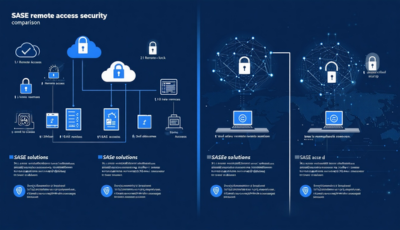The complexity of cloud migration means enterprises are turning to network automation to ensure application performance levels, balance traffic loads, and manage bandwidth costs. For many that means adopting software-defined networking (SDN) and, more specifically, software-defined wide area networking (SD-WAN).
There are many network automation solutions out there, and for the enterprise trying to make a choice that both improves performance and lightens the load for network teams, the options can begin to all look the same. Take a look at five considerations you should include when evaluating network automation tools:
Single- Versus Multi-Vendor: If an enterprise determines that they want to work with only one provider, it’s important to ensure the solution works across the entire product line used, and not just a subset of the technology. Choose a tool that will also be compatible with the organization’s future technology investments.
API Capabilities: The solution needs to have every feature available through an application programming interface (API). Even if you have features that operate independently right now, you may need them to interface with another solution in the future.
Orchestration: When a device on the network is changed there is a domino effect requiring additional changes to the infrastructure. For instance, a new device may spur the installation of a new firewall or a change in a firewall setting, or the need to connect to a load balancer. This adds to the requirements for orchestration options so that the automation solution is able to cause other automation frameworks to kick in.
AI and Intent-Based Networking Options: In network automation tools, there are often capabilities for the network to run itself, applying healing and security as needed. Solutions use artificial intelligence (AI) capabilities to adapt quickly to changes.
Look for a system of two modes: one that recommends changes for the engineer and one that completes changes without intervention. This allows network teams to become comfortable with AI before being forced to turn over all control to it.
Compliance: In industries like finance and health care, it’s important to be able to demonstrate security policies and compliance mandates being applied through network automation tools. The reporting capabilities need to allow visibility into network deployment phases, from planning to optimization.
Network automation is one of the critical steps in bringing infrastructure up to pace with digital strategies. It allows for better management of network resources and frees up IT talent for more strategic tasks. Contact us at Clarksys for guidance in choosing an automation tool for your enterprise.






